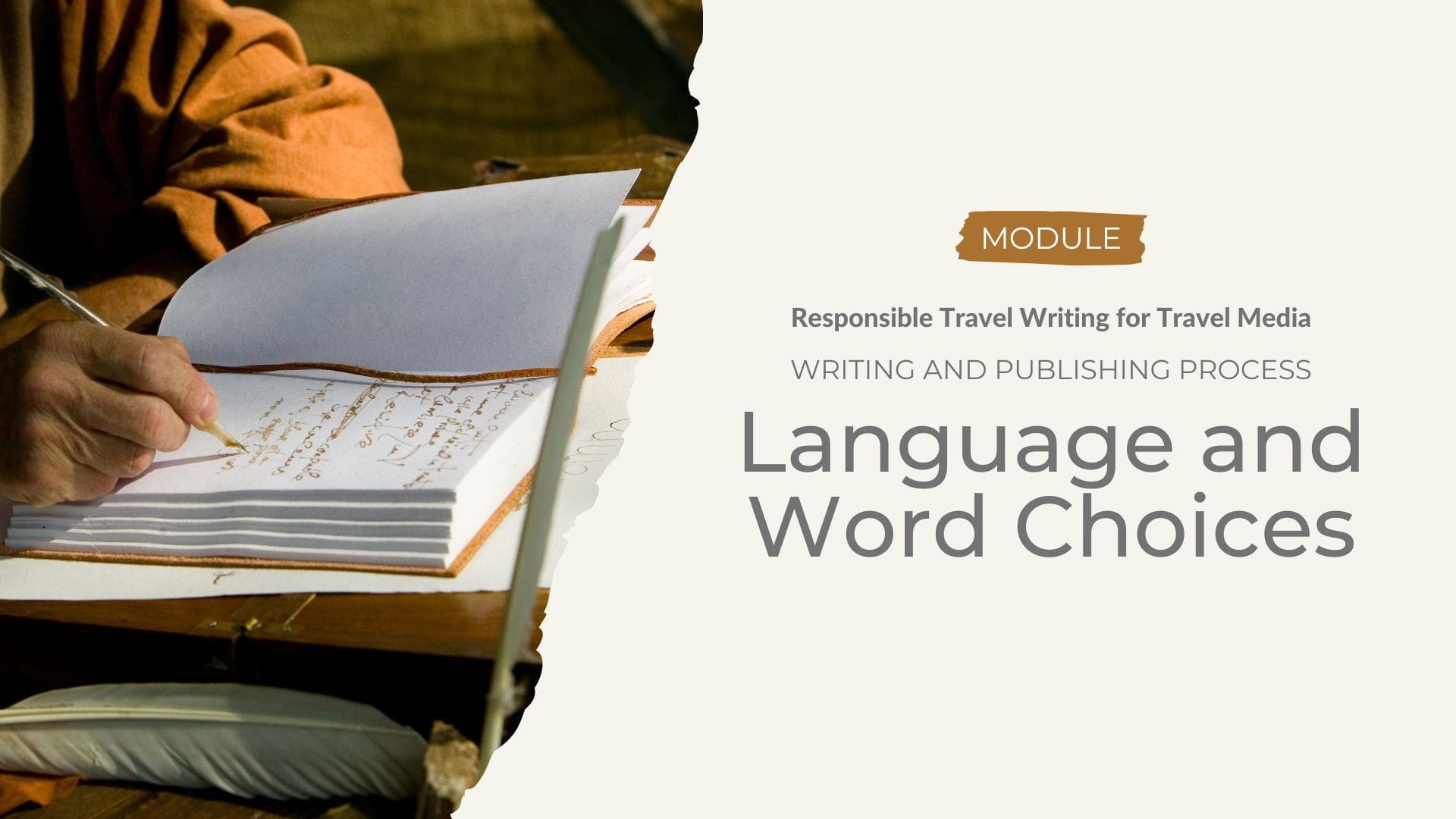Mindful service providers working in tourism eagerly extol its benefits: Travel gives people a chance to engage in cultural exchange, participate in immersive learning, and interact with people and places they wouldn’t normally encounter. Today, there’s an increased focus on delivering tourism in a way that is more community-centric and that empowers local people and their home communities.
Yet, despite these supposed benefits and a reconsideration of tourism’s purpose, the messaging used to communicate about destinations, experiences, and travel in general still often continues to reinforce and perpetuate harm. We continue to use language and imagery that are offensive, problematic, traveler-centric, and delivered through a colonial lens. These choices flatten the complexity and interconnected nature of places, reinforce the exploitation of resources, misrepresent traditions and customs, commodify cultures, and continue to silence and oppress people for the pleasure of the tourist gaze.
Those working in tourism have a responsibility for respectfully and appropriately representing places, and for creating and delivering experiences in a thoughtful and intentional way.
Similarly, they must communicate about those places and experiences responsibly. They must carefully consider how they’re reinforcing expectations. And, they need to think carefully about the way they portray people and places through their word, imagery, and delivery choices.
The first step in reversing harmful storytelling practices is understanding where and how they show up. There are four key areas to consider:
Language
One of the most common questions people have about responsible travel-related storytelling is whether there are words to avoid. Personally, I don’t think there are many words that should be completely stripped from a tourism-related vocabulary. However, there are many potentially problematic words that are used, and the reason why they are “potentially problematic” is because they aren’t used with or in an appropriate context.
Using words like “exotic,” “untouched,” “conquer,” or “hidden” (among countless other common travel-related words) can cause harm to people and places if used without careful thought. These words on their own are not necessarily offensive. However, the historical context of how they’ve been used to objectify, silence, erase, or oppress people and places in the past will continue to cause harm if used similarly in travel-related contexts.
Narrative
Every time you choose to put a message out in the world, you create a narrative. The message has a beginning and end. There are characters – the narrator, the audience, and possibly supporting characters. You choose to include and emphasize some details while leaving others out.
In travel-related communication, it is common for the traveler to be the main character. These traveler-centric stories focus on their interests and desires, and reinforce their beliefs. At times, the overarching story about tourism has been that travel – and, by extension, travelers – are the saviors of local people and their communities. This messaging has been reinforced to the point that, in some places, aspects of local cultures have been warped to meet travelers’ expectations.
Additionally, travel-related stories are often framed to be palatable and, therefore, simplified. This means the complexity and nuance of places is often stripped out, along with important historical, cultural, and political context. By avoiding controversy and conflict, travel-related narratives fail to surface important aspects of the places people visit.
Imagery
There’s nothing tourism professionals seem to love more than a picture of an attractive person with an aesthetically pleasing background that can be easily shared on social media. Yes, these images may get lots of likes and shares, but always gravitating toward “glamorous” photos without revealing what’s behind the scenes leaves a lot of the story untold.
Imagery communicates a lot of information, such as who is welcome in a place, what people can expect to see and experience, and how they can and should interact with an experience. Even though a picture might be worth a thousand words (as the saying goes), there’s a lot that goes unsaid with a single image. This includes historical, cultural, and environmental context about the people and issues that don’t feature in imagery, yet are intimately connected to or impacted by it.
Storytellers
Historically speaking, the people who have been given access to tell stories about travel experiences and places have been those of privilege who are visitors in a given place. They witness a slice of life, which often leads to romanticization and othering. This, then, means that people and places are reduced to consumables – something to “see” or “experience.”
Though they are the keepers of a place’s history and stories and the ancestors of the land, local people are rarely the ones who get to share their unfiltered stories. They might not have access or be given a platform to do so. Their stories might not fit the tourism rhetoric or feel comfortable for travelers moving through a place from a position of privilege. Or, travel service providers haven’t taken the time to foster the relationships that earn them the right to receive these stories as the gifts they are.
Regardless of the reason, the choice to center the outsider story as the dominant narrative in travel-related contexts remains a problem. It means the reinforced message isn’t even one that is told by someone with knowledge, agency, and a vested interest in what is communicated or how.
Unfortunately, even as tourism service providers make changes to their business operations and practices, they continue to use an outdated marketing communications playbook. It’s much easier to fall back on the easy, idyllic storytelling strategies relied upon over the years than change the approach to this aspect of travel-related work.
Yet, by leaning into these practices rather than moving away from them, consumers of travel content move through places and interact with experiences exactly as they’ve been presented. Those of us working in the tourism industry have no one but ourselves to blame when no real change ever happens.




